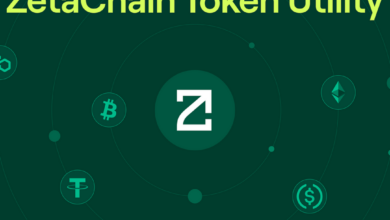
The Hidden Risk: How the Yen Carry Trade Disrupted Crypto
On August 5, the cryptocurrency market experienced one of its worst days in recent years. The sudden crash caught many off guard, but it was the result of months of accumulated risks from leveraged trading. Leveraged trading, where traders borrow funds to increase their positions, had been quietly amplifying market risks.
The abrupt uptrend of the Japanese yen acted as the match that ignited the fire, leading to a significant market downturn. Fortunately, there are indications that this upheaval might resolve as quickly as it began.
The Trigger: Surging Costs of Yen-Denominated Loans
The crash was precipitated by rising costs on yen-denominated loans. These loans had been a cheap source of financing for leveraged trades in the crypto market. As traders now reduce their leverage and exposure to the yen, the markets are poised for a healthy rebound. If broader markets stabilize, which seems likely, the crypto market might soon recover.
Bargain-Bin Borrowing: Leveraged Trading in Crypto
In the crypto world, prices are driven largely by short-term institutional traders who exploit volatility for profit. These traders often use leverage, or borrowed funds, to amplify their returns. Before the crash, open interest, which measures net borrowing, was nearly $40 billion. This borrowed money primarily came from Japan.
In 2022, interest rates on U.S. Treasury bills rose above zero and continued to climb, while rates in Japan remained low. Trading firms took advantage of this disparity, securing large Japanese loans to finance trades in other markets at low costs. This strategy, known as the yen carry trade, was not unique to crypto but became particularly pronounced in the sector.
By 2023, as the crypto bull market surged, leveraged trades yielded substantial profits, and the financing costs in yen were minimal.
The Yen Carry Trade and Its Expansion
The yen carry trade expanded significantly, with yen-denominated loans to foreign borrowers reaching $2 trillion by 2024, up more than 50% from two years earlier, according to ING Bank. This massive influx of cheap capital into the crypto market set the stage for high volatility and increased risks.
A Major Shift: Japan’s Rate Hike
Everything changed on July 31 when the Bank of Japan raised rates on short-term government bonds from 0% to 0.25%, following a previous hike in March from -0.1%. This seemingly small adjustment had a profound impact. The value of the yen surged in foreign exchange markets, as higher domestic interest rates made the currency more attractive. The USD/JPY exchange rate dropped from around 153 yen per dollar to 145, making yen-denominated loans significantly more expensive.
The Domino Effect: Market Reactions
The increased cost of yen loans triggered a wave of sell-offs. Traders, facing margin calls from lenders and general market caution, began offloading positions worth billions. Jump Trading, for instance, sold more than $370 million in ETH between July 24 and August 4, amplifying the downturn but not causing it.
Over $1 billion in leveraged trading positions, representing hundreds of thousands of trades, were liquidated between August 4 and 5, according to CoinGlass. Traditional markets also felt the impact, with the S&P 500 dropping over 5% on the day.
Prospects for Recovery: A Healthy Market Rebound?
Despite the turmoil, there is optimism for a market rebound. The crash has forced traders to exit high-risk leveraged positions and reduce their yen-denominated loan obligations. In crypto, net open interest has decreased to $27 billion, $13 billion less than before the crash. This reduction in leverage may pave the way for a healthier market environment.
Potential Central Bank Interventions
The severe impact on Japan’s stock market, which fell 12% on August 5 — its worst one-day drop since 1987 — might prompt the Bank of Japan to intervene, potentially easing the burden on borrowers. Moreover, the U.S. may also see relief.
A July report indicated a sharp rise in unemployment, suggesting that the Federal Reserve might cut interest rates more aggressively than previously anticipated.
David Aspell, a senior portfolio manager at Mount Lucas Management, told Cointelegraph, “If there was a shot at intervention working — this is the time. Given the recent data from the US, it looks like the Fed will be cutting much more aggressively than was thought a few months ago.”
Crypto Market Outlook: A Possible Rebound
If these scenarios unfold, the crypto market could be set for a late-summer rebound. However, it is essential to remember that crypto markets are highly unpredictable. The recent events highlight the inherent risks of leveraged trading. Traders should exercise caution and reconsider the use of leverage in such a volatile market.
Lessons Learned: Caution in Leveraged Trading
The August 5 crash serves as a stark reminder of the dangers of excessive leverage. While leveraged trades can amplify gains, they also magnify losses, as demonstrated by the recent market downturn. The rapid escalation of borrowing costs due to external factors like currency fluctuations can lead to significant market disruptions.
The cryptocurrency market’s severe downturn on August 5 was the result of accumulated risks from leveraged trading and the sudden uptrend of the Japanese yen. As traders reduce their leverage and exposure, the market is expected to stabilize and potentially rebound.
Central bank interventions and adjustments in interest rates could further support this recovery. Nonetheless, the events underscore the importance of cautious and prudent trading practices, particularly in a highly volatile and unpredictable market like crypto.




